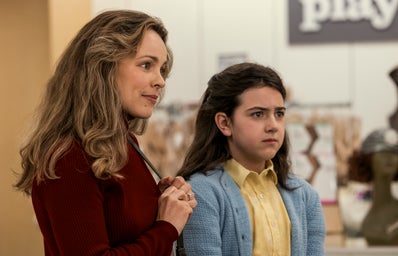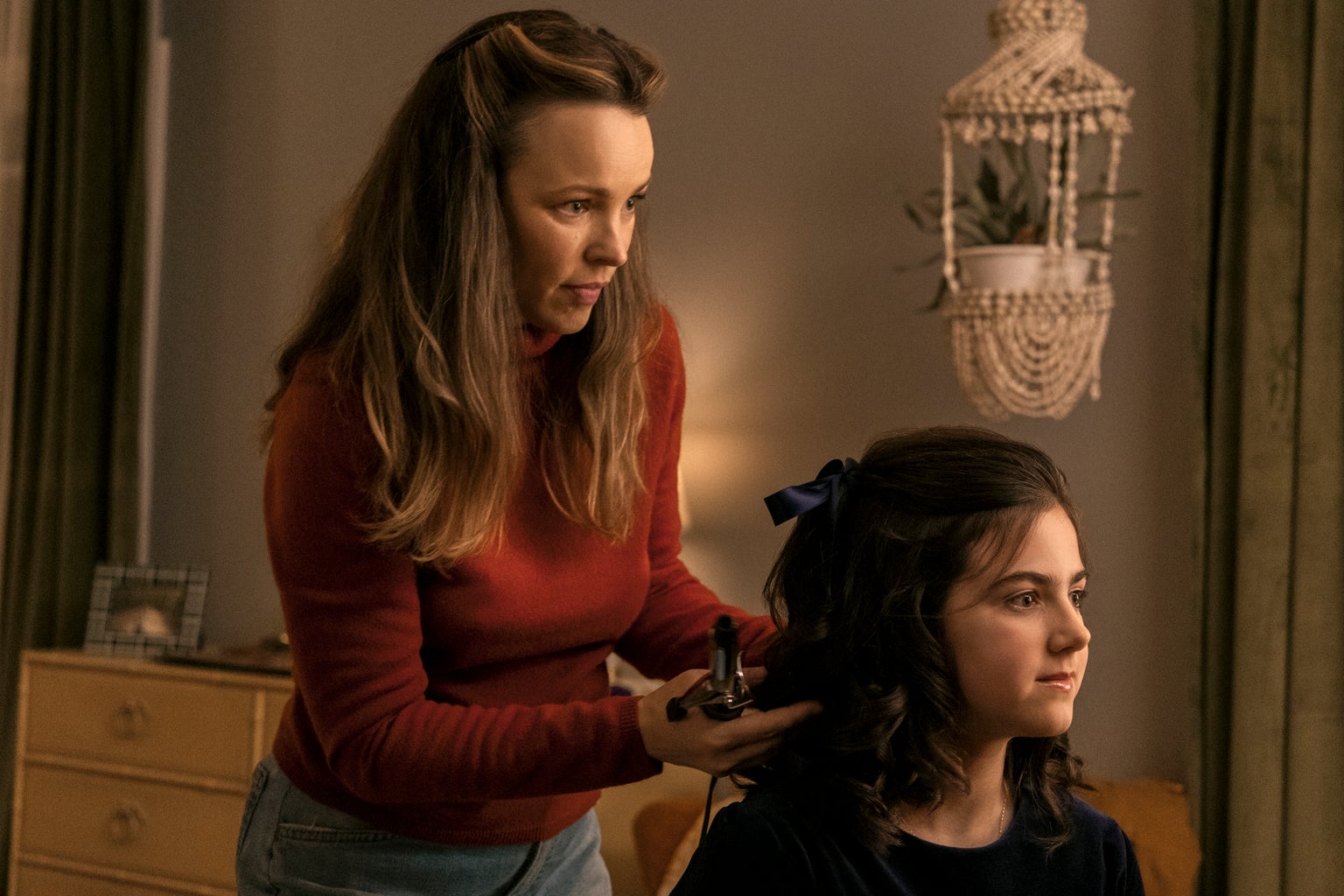How do you adapt a book that’s 53 years old? That was the challenge facing the filmmakers of Are You There God? It’s Me, Margaret, the movie adaptation of Judy Blume’s beloved 1970 novel of the same name. So if you’re wondering what the differences between the Are You There God? It’s Me Margaret book and movie are, I’ve got you covered.
The original Are You There God? was told entirely from the perspective of an 11-year-old girl named Margaret Simon as she went through the trials and tribulations of puberty and middle school. The film, which premiered in theaters on April 28, aimed to capture the nostalgic magic of the book, while also paying homage to its audience, which had grown up over the years — many of the original readers of Are You There God? are now mothers and grandmothers, after all.
This task would require a few tweaks to the source material, a move that doesn’t always go over well with readers or even the original author. But this time, Blume (who was a producer and writer for the movie) has called the movie “better than the book,” even after years of resisting an adaptation, according to her interview on The Today Show. Let’s get into what changes writer-director Kelly Fremon Craig and the other filmmakers made to the book. Spoiler warning: Spoilers for Are You There God? It’s Me, Margaret follow.
- Margaret’s mom Barbara has a much bigger role in the movie.
-
This is probably the most immediately noticeable difference. Rachel McAdams plays Barbara Simon, who, in the book, mostly existed as a background character. We find out a few details about her through Margaret’s eyes: She paints, and she comes across as a little judgmental. The movie totally redoes her character, and honestly, I have to agree it’s a change for the better.
McAdams’ Barbara has an entire life separate from Margaret. She not only paints, but teaches art classes at the beginning of the movie, a job she gives up for the family’s move to New Jersey. In the movie, we see her join the PTA and struggle with the constraints of solely being a homemaker without an artistic outlet. We even get a recurring subplot where she keeps putting off buying furniture for the family’s new living room. These changes allow the audience to connect with Barbara in a way they couldn’t have with the book, especially the audience of readers who are now mothers themselves.
- Margaret already knows about Barbara’s parents in the book.
-
In the movie, Margaret and Barbara have a conversation about Barbara breaking up with her conservative Christian parents because she chose to marry Margaret’s father Herb, who is Jewish. Margaret didn’t know — and wasn’t super curious — about the story behind why Barbara doesn’t talk to her parents anymore, but finding out, she offers her mother a moment of comfort.
In the book, Margaret already knows this context, meaning there’s no mother-daughter scene to the same effect.
- The movie changes one climactic scene.
-
Dana Hawley/Lionsgate The aforementioned scene builds up to a tense climax in which Barbara’s parents come to visit after Barbara secretly sends them a holiday card. The grandparents grill Margaret about church and going to Sunday school, wanting her to be Christian when Margaret’s parents have always said she has no religion until she’s old enough to choose for herself. After Margaret lashes out at them, saying she doesn’t believe in God, the grandparents leave. Sylvia, Margaret’s paternal Jewish grandmother and a major character in the rest of the book, shows up separately.
In the movie, however, Craig sets up the tension between the two sides of Margaret’s family and spirituality by having Sylvia show up in the middle of Barbara’s parents’ visit. This means Sylvia makes her own arguments during the fighting scene, and contextualizes Margaret’s frustration a bit more clearly — the two sides of her family are like the two sides of herself, or her expected relationship with God and religion.
- Margaret’s project idea comes from two different sources.
-
In the book, Margaret comes up with the idea to research different religions for a class project, hoping to find some personal closure about her complicated relationship with God. In the movie, however, the idea comes from her new teacher Mr. Benedict, who read Margaret’s answer on a class assignment that says she doesn’t like religious holidays.
This is a small change, but is probably meant to give a bit more weight to Mr. Benedict as a character. In the book, Mr. Benedict is pranked by the students for being a new, male teacher. In the movie, there’s less focus on him in general and those pranking scenes are removed, but Margaret does seem to appreciate him.
- Other minor characters also have some scenes swapped out.
-
Laura Danker, a girl in Margaret’s class whose body is developing faster than the other students, is often a topic of gossip and even some bullying. In the book, the brother of Margaret’s friend Nancy and his friend Moose (Margaret’s first crush) have spread rumors about Laura, and Margaret confronts Moose at the end of the book.
In the movie, this scene is cut and swapped out with two different scenes: Laura and Margaret make up after an argument, and dance together on the last day of school, implying that they become friends. Moose also hasn’t spread rumors about Laura in this version of the story, so the end of the movie sees her going back to summer camp but making plans with Moose to hang out when she’s back in town.
Otherwise, you can consider Are You There God? a pretty faithful adaptation. Honestly, if you haven’t read the book since you were a pre-teen and are going to see it in theaters, none of these major changes will really affect your viewing experience — though the expansion of Barbara’s character might make you like her a lot more.



